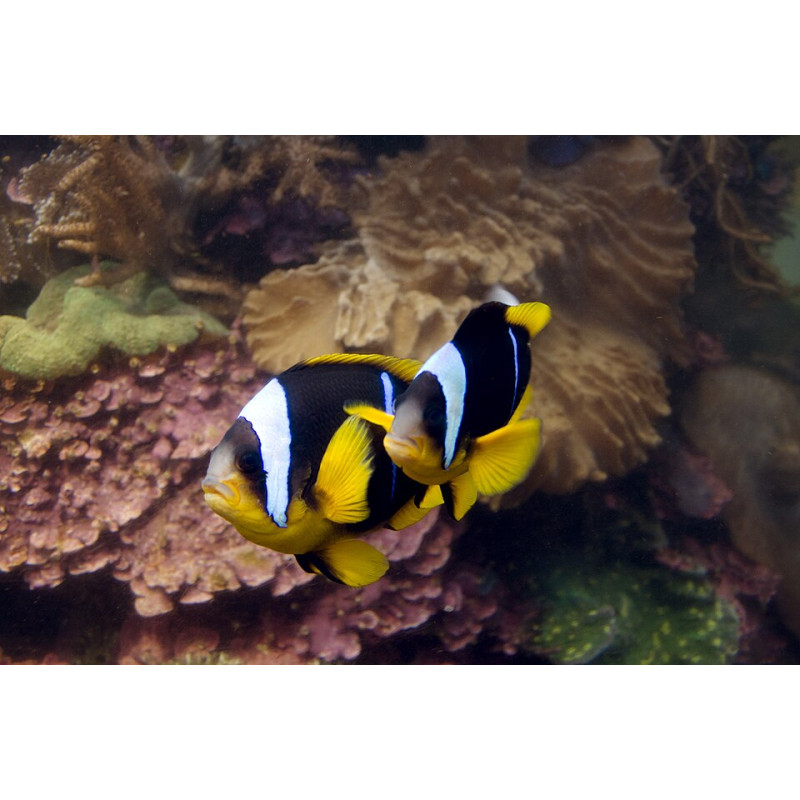More info
Popular Name: Allard's Clownfish, Two-Band Anemonefish
Scientific Name: Amphiprion allardi
Order: Perciformes — Family: Pomacentridae (Clownfish and Damselfish)
Geographic Distribution: Native to the Western Indian Ocean, including the coasts of Kenya, Tanzania, Mozambique, Madagascar, the Comoros, Seychelles, and Aldabra Atoll.
Lifespan: Typically 6 to 10 years in captivity with proper care
Maximum Adult Size: Up to 14 cm (5.5 inches)
pH Range: 8.1 to 8.4 — Water Hardness: 8 to 12 dKH
Temperature Range: 24°C to 28°C (75°F to 82°F)
Minimum Tank Size: 120 liters (30+ gallons) for a bonded pair
Reef Compatible: Yes, reef safe. May exhibit territorial behavior near host anemones.
Behavior and Tank Compatibility:
Amphiprion allardi is a semi-aggressive clownfish species, most peaceful when housed in a pair. Known for strong fidelity to host anemones such as Stichodactyla mertensii and Entacmaea quadricolor. Can be aggressive to other clownfish or similarly shaped species. Suitable for fish-only and reef aquariums with careful selection of tankmates.
Diet and Feeding:
Omnivorous. In the wild, it feeds on zooplankton, small invertebrates, and algae. In aquariums, it accepts a varied diet including high-quality marine pellets, frozen mysis shrimp, brine shrimp, finely chopped seafood, and algae-based preparations. A diverse, balanced diet ensures vibrant coloration and overall health.
Breeding and Reproduction:
Allard’s Clownfish are oviparous and display monogamous pairing. The female lays eggs on flat surfaces near the anemone host. Males guard and aerate the eggs until hatching, usually within 6–8 days. Larvae are pelagic and can be raised in dedicated rearing systems using rotifers and microalgae during early development.
Sexual Dimorphism:
Females are significantly larger than males. All specimens are born male; the dominant individual in a bonded pair undergoes sex change to become female (protandrous hermaphroditism).
Natural Habitat and Biotope:
Commonly inhabits shallow coral reefs and lagoons at depths ranging from 1 to 25 meters. Strongly associated with host sea anemones, providing mutual protection and cleaning. Juveniles often shelter in coral heads or around the host anemone colony.
Etymology:
The genus name Amphiprion is derived from the Greek words "amphi" (on both sides) and "prion" (saw), referring to the serrated preopercle. The species epithet allardi honors aquarist Noël Allard, who assisted in the collection of the type specimen.


